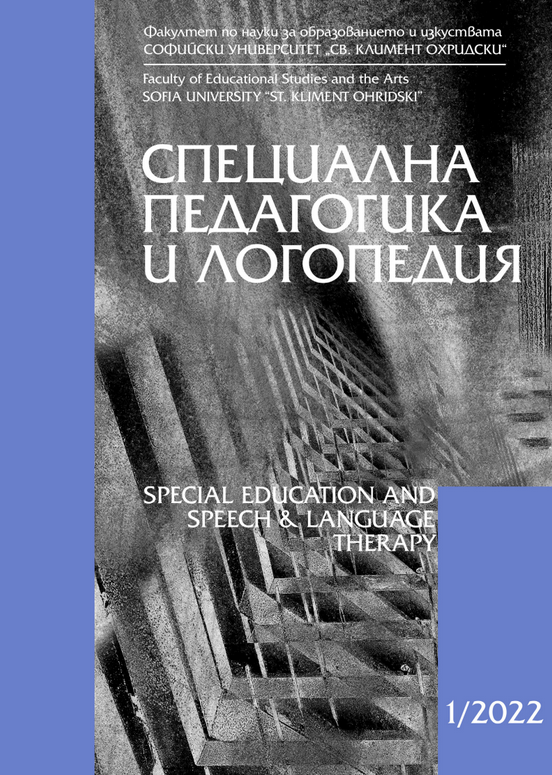Intellectual functioning in children with specific learning disorders
DOI:
https://doi.org/10.60059/SPL.2022.1.31-50Keywords:
learning disorder, intellectual functioning, psychological assessment, intelligence testing, WISCAbstract
The article outlines the results of a study on the specific features, similarities and differences in intellectual functioning in children with specific learning disabilities. The focus is on the heterogeneity of intellectual functioning, whereas the questions of causality and localization of deficits are subordinated to the task of gaining a better understanding of the qualitative aspects of the intellectual profile and their potential compensatory role in providing appropriate interventions and support strategies. Features of the components of measured intelligence in two groups of disorders (specific reading disorder and mixed disorder of scholastic skills) are explored, and the findings are transposed into a comparative perspective in order to differentiate significant similarities and differences. Emphasis is placed on the qualitative interpretation of test scores, the applicability of which provides a more in-depth, sophisticated, and tailored understanding of each of the clinical groups studied. The underlying hypothesis is that such an approach has significantly better power in the differential diagnosis and can provide valuable information in the process of developing and implementing therapeutic and educational strategies.
References:
Avt. kol. (2008). Balgarska standartizatsia na test za inteligentnost za detsa HAWIK-R 1983. Sofia: Natsionalen centar za opazvane na obshtestvenoto zdrave.
Mezhdunarodna klasifikatsia na bolestite, X reviziya (1998). Sofia: Natsionalen centar za kompleksno izsledvane na choveka.
Polnareva, N., Terziev, D., Avramova, A. (2007). Detska Psihiatriya. V Psihiatriya, psihologiya I psihoterapiya. Sofia: UI Meditsina, 275-335.
Polnareva, N. (2013). Razstroistva na detskata I iunosheskata vazrast. V Psihiatriya: Uchebnik za student I spetsializirashti lekari. Sofia: Meditsina I fizkultura, 411-443.
Terziev, D. (2022). Nevrorazvitiini razstroistva v detska I iunosheska vazrast. Sofia: Steno.
American Psychiatric Association. (2013). Diagnostic and statistical manual of mental disorders (5th ed.). Arlington, VA: American Psychiatric Publishing.
Bannatyne, A. (1974). Diagnosis: A note on recategorization of the WISC scaled scores. Journal of Learning Disabilities, 7, 272–273.
Dudley-Marling, C., Kaufman, N., Tarver, S. (1981). WISC and WISC-R profiles of learning disabled children: A review. Learning Disability Quarterly, 4, 307–319.
Frank, G. (1983). The Wechsler Enterprise: An Assessment of the Development, Structure and Use of the Wechsler Tests of Intelligence. Oxford: Pergamon.
Giofrè, D., Cornoldi, C. (2015). The structure of intelligence in children with specific learning disabilities is different as compared to typically development children. Intelligence, 52, 36-43.
Gutkin, T. B. (1979). WISC-R scatter indices: Useful information for differential diagnosis? Journal of School Psychology, 17, 368–371.
Kaufman, A. (1979). Intelligent testing with the WISC-R. USA:John Wiley & Sons.
Kaufman, A. S. (1981). The WISC-R and learning disabilities assessment: State of the art. Journal of Learning Disabilities, 14, 520–526.
Meeker, M. (1975). Glossary for SOI Factor Definitions: WISC-R Analysis, Available from SOI Institute, 2 14 Main St. , El Segundo, California.
Naglieri, Jack. (1982). Interpreting WISC-R and McCarthy scatter: A caution. Contemporary Educational Psychology, 7, 90-94.
Schiff, M. I. V. L., Kaufman, A. S., Kaufman, N. L. (1977). Scatter Analysis of WISC-R Profiles for Learning Disabled Children with Superior Intelligence, 400–404.
Smith, M. D., Michael Coleman, J., Dokecki, P. R., Davis, E. E. (1977). Recategorized WISC-R Scores of Learning Disabled Children. Journal of Learning Disabilities, 10(7), 437– 443.
Wechsler, D. (1974). Wechsler intelligence scale for children—revised. New York: Psychological Corporation.


